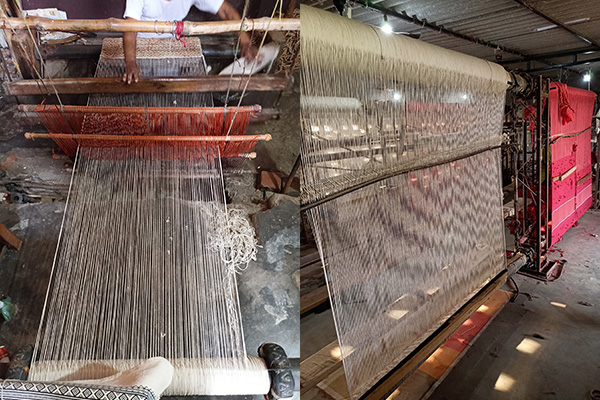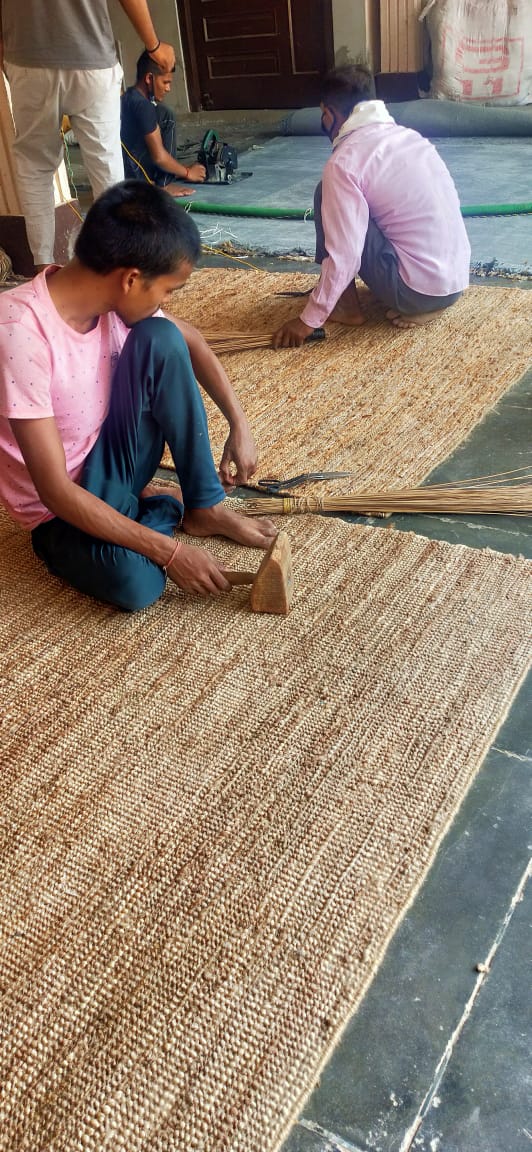
1.
Yarn
Wool is either imported or is bought from nearby markets and is carefully sorted to pick out unwanted particles. Wool often carries dust, grease which is removed by washing it thoroughly and is then sun dried for two-three days.

2.
Spinning
Spinning involves two steps Carding and Spinning- Carding is sometimes done by hand with help of carding brush or on carding rollers run by hand. The carded wool is spun into yarn by using a charkha or a spinning wheel.

3.
Dyeing
These dyes have a high degree of fastness. Depending on the weather, the dyed yarn has to be dried in the sunlight for one to three days. Pot dyeing and vegetable (natural) dyeing are still being used by some manufacturers.

4.
Designing
When speaking about patterns and carpet manufacturing these are often divided into three categories; curvilinear, geometric, and figural patterns. There are many frequent named patterns, we will mention a few of the most common ones.

5.
Weaving
Weaving carpets require definite skills and a certain level of expertise on the part of the weaver. There have been different types of weaving techniques that can be used to produce carpets with a variety of effects and designs on them. Every act of weaving involves choosing a particular fiber, deciding on colors, imagining an abstract or design, a weaving technique, and finally a finishing process where the carpet finally turns into a refined piece of craft and comfort.


7.
Stretching
Stretching is done to make the sides straight otherwise the carpet has some curved edges.

8.
Clipping
This is the finishing step in the manufacturing of carpet. The clipping is done with minute detailing.


10.
Quality Control
Carpet quality control refers to the process of ensuring that carpets meet certain standards of excellence in terms of materials, construction, appearance, and performance. This process typically involves various steps to assess and verify the quality of carpets before they are distributed to customers.


